#growroom
Text
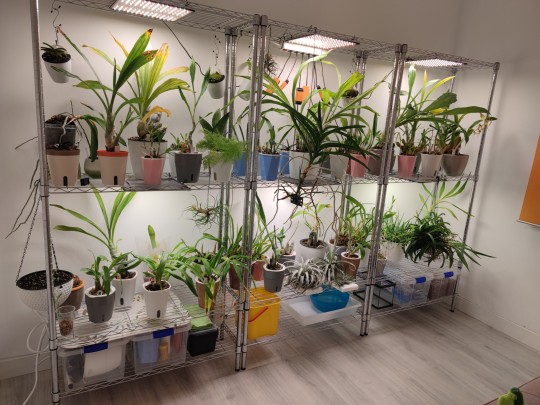
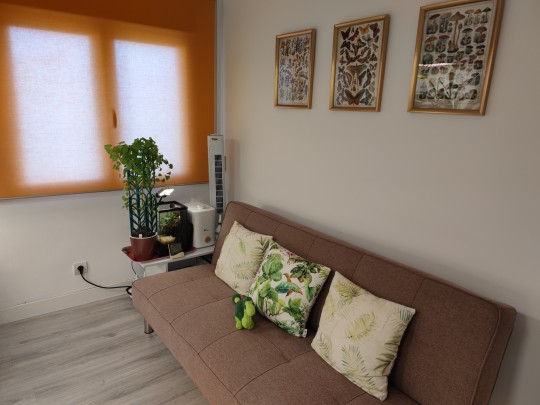
I activated the third shelf in the growroom. I need to keep a safety distance between each orchid to slow down the pest contagion...
3 notes
·
View notes
Photo
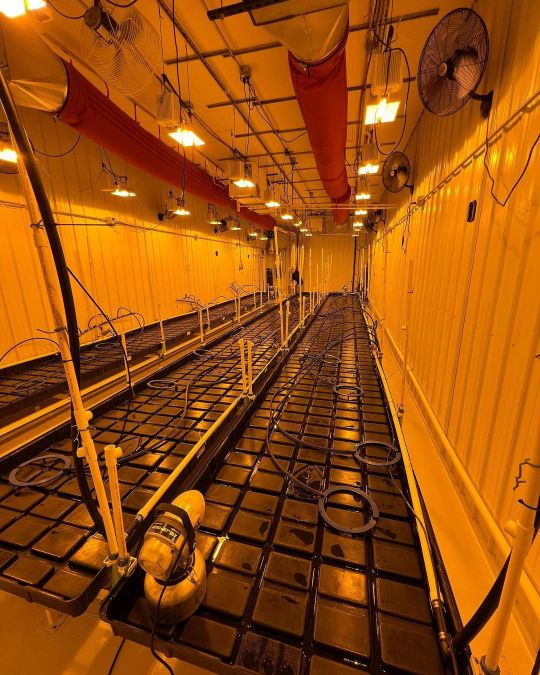
Cleaning day! . #wellbudds #420 #710 #mmemberville #stonerfamily #cannabiscommunity #ganja #cleanroom #growroom #cleangrowroom #sanitize #disinfect #cleancannabis #cannabisipm #sanidate #zerotol #demandsafecannabis #environmental #safe #safecannabis #food #passingtestsstartshere #thisishowwedo https://www.instagram.com/p/CegYIn2uqOG/?igshid=NGJjMDIxMWI=
#wellbudds#420#710#mmemberville#stonerfamily#cannabiscommunity#ganja#cleanroom#growroom#cleangrowroom#sanitize#disinfect#cleancannabis#cannabisipm#sanidate#zerotol#demandsafecannabis#environmental#safe#safecannabis#food#passingtestsstartshere#thisishowwedo
2 notes
·
View notes
Text
Welcome to "Lighting the Way: A Comprehensive Guide to Selecting Hydroponic Grow Lights for Your Grow Room". If you are a passionate gardener or someone interested in venturing into hydroponics, then this article is here to guide and support you every step of the way. Growing plants indoors can be challenging, especially when it comes to providing them with adequate lighting.
That's why we have created this extensive guide that dives deep into the world of hydroponic grow lights, offering comprehensive information on how to choose the right lighting system for your specific needs and goals. Whether you are a seasoned grower looking to upgrade your current setup or a beginner ready to embark on an exciting journey, our compassionate voice will help illuminate your path towards successful indoor gardening. So let's turn on those lights and dive into this remarkable world of possibilities!
A large greenhouse with rows of lettuce plants, selecting hydroponic grow lights for the optimal grow room setup.
The Basics of Hydroponic Grow Lights
Importance of Grow Lights in Hydroponics
Grow lights are an essential component of hydroponic systems as they serve as a replacement for natural sunlight. Without adequate light, plants cannot photosynthesize efficiently and grow to their full potential. Hence, selecting the right grow lights is crucial for successful indoor gardening.
Types of Grow Lights Used in Hydroponics
There are several types of grow lights available for hydroponic setups. Each type has its own advantages and considerations:
LED Grow Lights: These energy-efficient lights generate little heat and can be customized to emit specific wavelengths, catering to different plant growth stages.
High-Intensity Discharge (HID) Lamps: HID lamps include metal halide (MH) and high-pressure sodium (HPS) bulbs. While MH bulbs promote leafy growth, HPS bulbs help with fruiting and flowering stages.
Fluorescent Tubes: Compact fluorescent lights (CFLs) or T5 fluorescent tubes are affordable options suitable for small-scale setups or seedlings.
Plasma Lamps: These advanced lamps produce a broad spectrum similar to natural sunlight but can be expensive upfront.
Regardless of the type chosen, it is important to consider factors such as light intensity, coverage area, energy efficiency, and maintenance requirements when selecting grow lights for your hydroponic system.
Plants are growing in a hydroponic greenhouse in California, with the assistance of hydroponic grow lights and careful selection of the plants suited for the grow room environment.
Understanding Different Types of Grow Lights
When it comes to selecting the right grow lights for your hydroponic grow room, it's important to understand the different types available. Here are a few key options:
Fluorescent Lights: These are affordable and produce less heat, making them suitable for smaller plants or seedlings. However, they may not provide enough intensity for bigger plants.
High Intensity Discharge (HID) Lights: HID lights come in two types - metal halide (MH) and high-pressure sodium (HPS). MH produces cooler light, ideal for promoting vegetative growth, while HPS emits warmer light that encourages flower production.
LED Grow Lights: LED lights are energy-efficient and versatile. They can be customized with different wavelengths to cater to specific plant needs at various stages of growth.
No matter which type you choose, ensure your grow lights have adjustable height settings and proper ventilation to prevent damage from excessive heat buildup. Remember that each type has its own advantages and drawbacks; consider factors such as cost, energy efficiency, space requirements, and the specific needs of your plants when making your selection.
A young Asian woman is examining lettuce in a greenhouse illuminated by hydroponic grow lights.
Factors to Consider When Choosing Grow Lights
When choosing grow lights for your hydroponic grow room, there are several important factors that you should consider.
These factors will help ensure that your plants receive the optimal amount and quality of light for healthy growth.
Type of Light: There are various types of grow lights available, including fluorescent, LED, and high-intensity discharge (HID) lights. Each type has its own strengths and weaknesses in terms of energy efficiency, spectrum range, and lifespan.
Wattage and Coverage Area: The wattage of a grow light determines how much power it consumes while the coverage area indicates how much space it can effectively illuminate. It's essential to match the wattage and coverage area with your specific needs to provide sufficient light intensity throughout your entire grow room.
Light Spectrum: Different plants have different light requirements at each stage of their growth cycle. Understanding the specific spectrum needs - whether blue light for vegetative growth or red light for flowering - is crucial in providing them with the right kind of lighting they require.
By taking into account these factors when selecting hydroponic grow lights for your indoor garden, you can create an ideal environment where your plants thrive and flourish under optimal lighting conditions.
A comprehensive guide for selecting a greenhouse with hydroponic grow lights that allows plants to thrive.
Comparing Different Light Spectrums and Intensities
Light spectrums and intensities play a crucial role in the success of hydroponic grow lights. The spectrum refers to the different colors of light emitted by the bulbs, while intensity relates to the brightness or strength of the light.
Spectrum: There are various spectrum options available for hydroponic grow lights, including full-spectrum, blue spectrum, red spectrum, and even customizable options. Full-spectrum LED lights emit a wide range of wavelengths that mimic natural sunlight, providing plants with all the necessary light for growth and development. Blue spectrum lights are ideal for vegetative growth as they promote leafy green growth. Red spectrum lights are beneficial during flowering stages since they encourage blooming and fruiting.
Intensity: The intensity of light is measured in foot-candles or lux levels and indicates how bright it is at a certain distance from the source. High-intensity discharge (HID) lamps produce intense amounts of light suitable for larger gardens where long distances need illuminating efficiently. On the other hand, fluorescent lamps emit less intense but more evenly distributed light that works well in compact spaces or smaller setups.
It's important to strike a balance between both aspects when selecting your hydroponic grow lights: finding an appropriate combination ensures optimal plant health without damaging them due to excessive heat or blinding brightness.
A comprehensive guide to selecting and growing plants in a large greenhouse using hydroponic grow lights.
Determining the Right Light Coverage for Your Grow Room
When determining the right light coverage for your grow room, it is important to consider the specific needs of your plants. Different types of plants have different light requirements, so it is crucial to understand what your plants need in order to thrive.
Start by measuring the size of your grow room and calculating its square footage. This will give you a starting point for determining how many lights you will need. Generally, it is recommended to aim for around 30-40 watts per square foot of growing space.
Next, consider the intensity and spectrum of light needed by your plants. Some plants require more intense light while others prefer lower levels. You can adjust the height at which you hang your lights to accommodate these needs.
Lastly, make sure that the entire surface area of your plant canopy receives adequate light coverage. Positioning multiple lights strategically can help achieve this goal.
Remember that each plant has unique requirements - taking time to research and provide appropriate lighting conditions will lead to healthy growth and abundant harvests!
A hydroponic grow room with lettuce growing under specialized lighting.
Energy Efficiency and Cost Considerations
When selecting hydroponic grow lights for your grow room, it's important to consider energy efficiency and the associated costs. Energy-efficient lighting not only helps reduce electricity bills but also minimizes environmental impact. LED lights are a popular choice due to their high energy efficiency compared to traditional options like fluorescent or incandescent bulbs. LEDs consume less power while producing bright light, making them ideal for indoor gardening.
Switching to LED grow lights can lead to significant long-term savings. Although they may have a higher upfront cost compared to other options, LEDs last longer and require less maintenance. Their lifespan of up to 50,000 hours ensures that replacements are infrequent, reducing expenses over time. Additionally, LEDs emit less heat than traditional lights, minimizing the need for additional cooling systems in your grow room and further cutting down on energy consumption.
In conclusion, carefully considering energy efficiency and associated costs is crucial when selecting hydroponic grow lights for your indoor garden. Opting for LED lights can result in substantial savings while promoting sustainable practices through reduced power consumption and longer-lasting bulbs. By prioritizing energy efficiency, you can create an eco-friendly environment that benefits both your plants and your wallet.
A comprehensive guide to a large greenhouse with plants growing in it, utilizing hydroponic grow lights for optimal lighting.
Tips for Properly Installing and Positioning Grow Lights
Proper installation and positioning of grow lights is crucial to ensure optimal growth and yield in your hydroponic grow room. Here are a few important tips to keep in mind:
Choose the right location: Identify a suitable spot for installing grow lights that provides ample space, proper ventilation, and easy access for maintenance.
Hang at the correct height: Hang the grow lights at an appropriate distance from the plants to prevent burning or stunting their growth. As a general guideline, keep HID (High Intensity Discharge) lights around 2 feet above young seedlings and 4-6 inches away from mature plants.
Position evenly: Arrange the grow lights so that they cover all areas of your growing space uniformly. This will ensure that every plant receives adequate light energy, promoting balanced growth throughout.
Remember to regularly monitor your plants' response to lighting conditions as different species may have varying light requirements. By following these simple yet essential guidelines, you can provide your hydroponic garden with ideal lighting conditions for healthy development.
A comprehensive guide to a large greenhouse with plants growing in it, featuring hydroponic grow lights for optimal lighting.
Troubleshooting Common Issues with Grow Lights
1. Insufficient Light Output
If your plants are not thriving or growing as expected, it could be due to insufficient light output from your grow lights.
Check if the wattage of your current lights matches the recommended amount for the size of your grow room.
Consider upgrading to higher wattage bulbs or adding more lights to ensure adequate light intensity for optimal plant growth.
2. Uneven Light Distribution
Uneven light distribution can lead to inconsistent plant growth and development.
Make sure that you position your grow lights at an appropriate distance from each other and from the plants.
Regularly rotate the positions of your lights or use reflectors and diffusers to achieve a more uniform spread of light throughout your grow room.
3. Overheating
⁃ If you notice excessive heat coming from your grow lights, it could potentially harm both the plants and the lighting system itself.
⁃ Check if there is proper ventilation in place within your grow room.
⁃ Consider
using cooling fans or air conditioner units specifically designed for hydroponic setups to maintain a suitable temperature range.
Note:
Remember that troubleshooting issues with hydroponic grow lights requires careful observation and adjustments over time. Don't hesitate to seek advice from experienced growers or consult professional resources when faced with persistent problems.
I found three more resources that offer valuable insights into hydroponics and sustainable farming:
Risk of E. coli in Hydroponic and Aquaponic Systems (Purdue University News): This article from Purdue University highlights the potential risks associated with E. coli contamination in hydroponic and aquaponic systems. Despite the general belief that these systems have a lower risk of contamination, the study found the presence of Shiga toxin-producing E. coli in both hydroponic and aquaponic setups. This finding underscores the importance of proper handling and sanitation practices in these systems to prevent contamination【61†source】【53†source】.
Hydroponic Greenhouse- Florida Virtual Field Day (University of Florida, IFAS): This resource provides extensive information on hydroponic greenhouse production, focusing on aspects such as nutrient solution formulation, pest management, and transplant production. The presentations and publications featured in this virtual field day are particularly useful for those involved in commercial vegetable production and protected agriculture, with an emphasis on alternative crops and hydroponic technology【62†source】.
Hydroponic Greenhouse Production Resources (UMass Amherst): This resource from the University of Massachusetts Amherst covers various aspects of hydroponic greenhouse production, including the need for adequate heat, ventilation, and light management in the greenhouse. It also discusses the initial investment required for hydroponic systems and emphasizes the need for technical skill in managing these systems. The guide suggests that those interested in hydroponic production should start small to learn the various aspects of production and visit existing growers to understand how systems are set up【46†source】.
Each of these resources provides unique perspectives and practical advice on hydroponic farming, covering both the risks associated with these systems and the technical aspects of managing hydroponic greenhouses.
0 notes
Text
How to: LightRail light mover basement grow room design. LightRail3.com
0 notes
Photo

Auto mist 12v Odour diffusers, perfect for cars, camper vans, small offices and bedrooms. Use with aromatherapy oils or Ona odour neutralising liquid which is often copied but never beaten. Kills all odours dead from smoking, pets, cooking, etc. available online and in store! - - - #Hydroponics #growroom #hydro #Growshop #garden #Gardening #gardener #gardenlife #love #plants #plant #flower #flowers #growing #lincolnshire #odourcontrol #ona #pets #petsmells #vatransporter #campervan #vegtables #lincoln #odourcontrol 👉👉👉 @hghydroponics 🙏🌱 [email protected] Tel - 0845 643 5523 We ship worldwide✈️📦 (at Lincoln, Lincolnshire) https://www.instagram.com/p/Co5euLhNu8y/?igshid=NGJjMDIxMWI=
#hydroponics#growroom#hydro#growshop#garden#gardening#gardener#gardenlife#love#plants#plant#flower#flowers#growing#lincolnshire#odourcontrol#ona#pets#petsmells#vatransporter#campervan#vegtables#lincoln
1 note
·
View note
Photo

The Botanicare Sweet® Line is an all-natural mineral supplement that contains a unique combination of vital compounds and essential elements directly involved in 🪴 photosynthesis and respiration. In addition to Sweet Raw, Sweet Berry🫐, Citrus🍊 and Grape🍇 also provide aroma and flavor amending plant esters that enhance aromas and flavors in your crops! 🥰 #Hydroponics #Gardening #GardenSupplies #BotanicareSweet #sweetplants #GrowRoom #HarvestEquipment #TrimmingSupplies #FoxFarm #Athena #Grow Lights (at Phelan Hydro & Garden Supply) https://www.instagram.com/p/CnRjkgYriYp/?igshid=NGJjMDIxMWI=
#hydroponics#gardening#gardensupplies#botanicaresweet#sweetplants#growroom#harvestequipment#trimmingsupplies#foxfarm#athena#grow
0 notes
Photo

#Repost @maximumyield ・・・ Aphids are a common pest affecting outdoor and indoor growers everywhere. Read on for a detailed look at what they are, how to spot them, control them, and how to avoid an infestation in the first place. Link in our profile! . . . . #aphid #aphids #pestcontrol #pestproblem #plantproblem #plantproblems #growroom #pestinfestation #growrooms #indoorgrow #indoorgrower #indoorgrown #indoorgarden #indoorgardening #indoorgardener #hobbygrower #hobbygarden #hobbygrow #growyourown #cultivation #cultivate #horticulture #grower#growers #grow #growing #gardener (at Hudson Heights, Manhattan) https://www.instagram.com/p/ClR9Cu3sKYC/?igshid=NGJjMDIxMWI=
#repost#aphid#aphids#pestcontrol#pestproblem#plantproblem#plantproblems#growroom#pestinfestation#growrooms#indoorgrow#indoorgrower#indoorgrown#indoorgarden#indoorgardening#indoorgardener#hobbygrower#hobbygarden#hobbygrow#growyourown#cultivation#cultivate#horticulture#grower#growers#grow#growing#gardener
0 notes
Photo
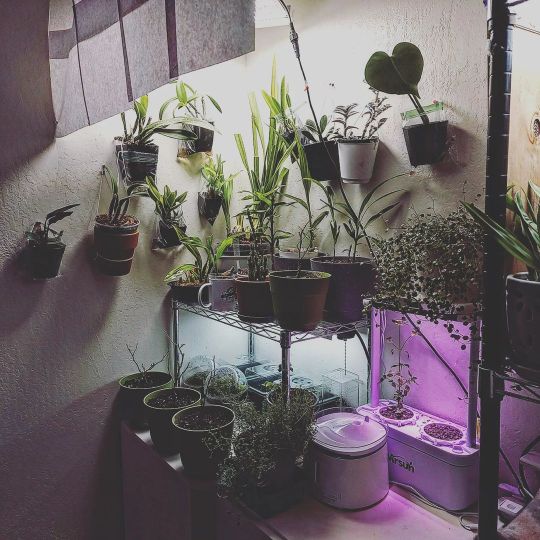
Did some rearranging and decided the plain paper was too boring so I used construction paper. The grow light panel in that corner is blinding, especially when at my desk, the paper fixes that problem. I love the colors xD #projectfinished #projectfinished✔️ #plantdecor #growroom #thegrowroom #orchids #plantlover #plantlovers #plantloversofinstagram https://www.instagram.com/p/ChiqyuQJbTf/?igshid=NGJjMDIxMWI=
#projectfinished#projectfinished✔️#plantdecor#growroom#thegrowroom#orchids#plantlover#plantlovers#plantloversofinstagram
0 notes
Text
Commercial Grow Room Air Conditioner
Cannabis needs a proper temperature to have good growth. For that, you can install Commercial Grow Room Air Conditioner in Sealed. To buy one, you can contact us. At Harvest Integrated, our goal is to be your go-to for creating the most productive indoor and greenhouse cannabis environments. For more, visit or call us at +1 800-607-4758.
0 notes
Text
Check it out…https://www.amazon.co.uk/stores/TeKnic/page/AEE3399D-5ABA-41AA-9843-02F1490830E0?ref_=ast_bln
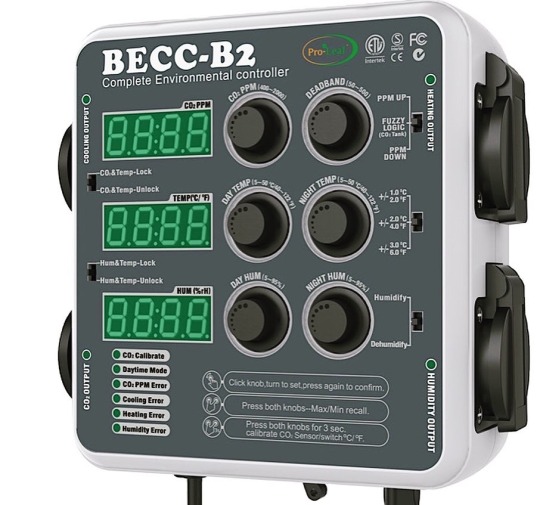
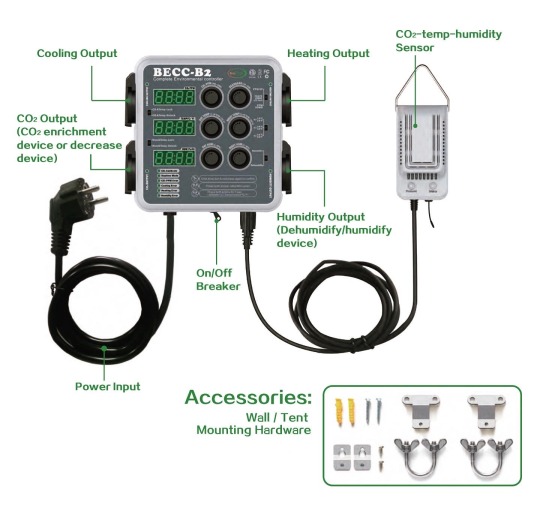




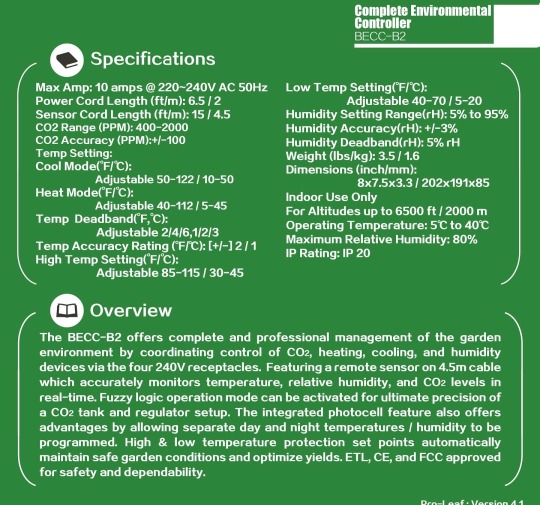
#amazon#docking station#entrepreneur#gadgets#my brand#online shopping#technologies#shopping#teknic#bargains#e commerce#hub#laptop accessories#macbook#tech#beccb2#proleaf#hydroponics#growroom#weedstagram#weedlife#weedsociety#environmentcontroller#hydroponiccontroller
0 notes
Text
Slanigiro Renguez - Sheila
0 notes
Text

Discover essential strategies to safeguard your grow facilities and farms against Hop Latent Viroid (HpLVd) with expert insights from MORR. Learn effective prevention measures and mitigation techniques to ensure the health and productivity of your crops. Stay ahead in protecting your agricultural investments.
#GrowSupplies#CropProduction#Horticulture#Floriculture#CEA#Hydroponics#Aeroponics#Aquaculture#Plants#Crops#Greenhouses#Farms#Agriculture#AG#IndoorFarms#GrowRooms#GrowOps#Farmers#Farming#LosAngeles#LA#CA
0 notes
Photo

@j_bare15 and @aaron.mccomb.16 doing some defoliation . #wellbudds #mmemberville #stonerfamily #cannabiscommunity #420 #710 #mmmp #mmfla #mrtma #hightimes #highlife #rollitup #letsgethigh #letsgetmedicated #growroom #buds #nugs #plants #shrubs #trees #flowers https://www.instagram.com/p/Cd514hqu9Ru/?igshid=NGJjMDIxMWI=
#wellbudds#mmemberville#stonerfamily#cannabiscommunity#420#710#mmmp#mmfla#mrtma#hightimes#highlife#rollitup#letsgethigh#letsgetmedicated#growroom#buds#nugs#plants#shrubs#trees#flowers
0 notes
Text
Introduction
When it comes to setting up a grow room, there are many factors to consider. One of the most important decisions you'll have to make is choosing the right hydroponic system for your specific needs. Hydroponic systems offer a range of benefits and can be tailored to fit any size or type of grow room. In this article, I'll discuss the advantages of using hydroponic systems and provide recommendations for different types of grow rooms.
A hydroponic greenhouse with plants growing in it.
Benefits of Hydroponic Systems
Hydroponic systems offer several advantages over traditional soil-based growing methods. Here are some key benefits to consider:
Increased Growth Rate: Hydroponic systems provide plants with a highly oxygenated and nutrient-rich solution directly to their roots. This optimized environment allows plants to grow faster and produce higher yields compared to traditional soil-based methods.
Water Efficiency: Hydroponic systems use significantly less water than traditional soil-based systems. The recirculating water in hydroponic systems is constantly monitored and adjusted, resulting in reduced water waste.
Space Optimization: Hydroponic systems can be designed to fit any space, making them ideal for small indoor grow rooms. By eliminating the need for soil, hydroponic systems maximize the use of available space, allowing for more plants in a smaller area.
Reduced Pest and Disease Risk: Hydroponic systems provide a controlled environment, minimizing the risk of pests and diseases that are commonly associated with soil-based growing. This allows for a healthier and more reliable crop production.
Now, let's explore different types of grow rooms and the recommended hydroponic systems for each:
Small Indoor Grow Room: For compact spaces, a vertical hydroponic system like a vertical NFT (Nutrient Film Technique) or a vertical tower system is an excellent choice. These systems maximize space by utilizing vertical growing surfaces.
Medium-Sized Greenhouse: A deep water culture (DWC) system or an ebb and flow system are suitable for medium-sized greenhouses. These systems provide efficient nutrient delivery while allowing for easy management and maintenance.
Large Commercial Facility: In a large-scale commercial facility, a nutrient film technique (NFT) or a commercial aeroponic system is recommended. These systems can handle high volumes of plants and provide effective nutrient delivery for optimal growth.
Remember, the choice of hydroponic system will depend on your specific needs, available space, and budget. By carefully selecting the right hydroponic system, you can maximize your plant growth and achieve exceptional results in your grow room. [1][2]
A hydroponic greenhouse with green plants growing in it.
Small-Scale Grow Rooms
When it comes to hydroponic systems for small-scale grow rooms, there are a few options that work particularly well. In this article, we will explore two popular choices: Deep Water Culture (DWC) and Nutrient Film Technique (NFT). These systems are efficient, space-saving, and provide optimal conditions for plant growth.
1. Deep Water Culture (DWC)
DWC is a simple, yet effective hydroponic system that involves suspending plant roots in a nutrient-rich solution. The roots are kept constantly submerged, allowing for maximum absorption of nutrients and oxygen. This system is ideal for small-scale grow rooms due to its simplicity and low cost.
DWC System Setup
Setting up a DWC system is relatively straightforward. You will need a reservoir, an air pump, an air stone, and a net pot. The net pot holds the plant in place while allowing the roots to access the nutrient solution. Ensure that the solution is well-oxygenated by placing the air stone in the reservoir and connecting it to the air pump.
Nutrient Management in DWC
In a DWC system, it is crucial to monitor and maintain proper nutrient levels. Regularly check the pH and adjust it to the appropriate range for your plants.
Additionally, ensure that the nutrient solution is changed every one to two weeks to prevent the buildup of algae and other contaminants.
2. Nutrient Film Technique (NFT)
NFT is another popular choice for small-scale grow rooms. In this system, a shallow, sloping channel is used to continuously flow a thin film of nutrient solution over the plant roots. The roots absorb the necessary nutrients, and the excess solution is collected and recirculated.
Setting Up an NFT System
To set up an NFT system, you will need a sloping grow tray, a reservoir, a submersible pump, and a collection tray. The nutrient solution is pumped from the reservoir to the grow tray, and gravity pulls it back into the collection tray, where it is recirculated. This ensures a constant flow of nutrients to the plants.
Maintaining Nutrient Film Technique
Regular maintenance is essential for an NFT system. Check that the pump is functioning properly and ensure that the flow of the nutrient solution is continuous. Monitor nutrient levels and adjust as needed. Additionally, regularly clean the system to prevent the buildup of algae and other contaminants.
In conclusion, both DWC and NFT systems are excellent choices for small-scale grow rooms. They offer efficient use of space and provide optimal conditions for plant growth. By carefully setting up and maintaining these hydroponic systems, you can enjoy healthy and thriving plants all year round. [3][4][5][6][7][8][9][10][11][12][13][14]
A hydroponic greenhouse with plants growing in it.
Medium-Scale Grow Rooms
When it comes to medium-scale grow rooms, there are several hydroponic systems that can help you maximize your yields. In this article, we'll explore two popular options: drip irrigation and aeroponics.
1. Drip Irrigation
Drip irrigation is a widely used hydroponic system that delivers nutrient-rich water directly to the plant roots. With this system, water is delivered through a network of tubes and drippers, ensuring that each plant receives the necessary nutrients and moisture.
Drip Irrigation System Components
To set up a drip irrigation system, you will need the following components:
Reservoir: A container to hold the nutrient solution.
Pump: To circulate the nutrient solution through the system.
Tubing: Transports the nutrient solution from the reservoir to the plants.
Drippers: Deliver a controlled amount of water and nutrients to each plant.
Timer: Controls the frequency and duration of the irrigation cycles.
Tips for Successful Drip Irrigation
Here are a few tips to ensure a successful drip irrigation setup:
Regularly check and clean the drippers to avoid clogging.
Ensure proper spacing between plants to maximize water and nutrient distribution.
Monitor the nutrient solution's pH and nutrient levels to maintain optimal conditions.
Adjust the irrigation duration and frequency based on plant needs and environmental conditions.
Regularly monitor the system for leaks or any other issues that may affect its performance.
2. Aeroponics
Aeroponics is a high-tech hydroponic system that suspends plant roots in the air and mists them with a nutrient-rich solution. This system allows for efficient nutrient absorption and promotes rapid plant growth.
Aeroponic System Design
To set up an aeroponic system, you will need the following components:
Reservoir: Holds the nutrient solution.
Pump: Pressurizes the nutrient solution for misting.
Sprayers/Misters: Create a fine mist of nutrient solution that is directed towards the roots.
Growing Chambers: Houses the plants and roots.
Timer: Controls the misting cycles.
Misters and Sprayers in Aeroponics
Misters and sprayers play a crucial role in aeroponics by delivering a fine mist of nutrient solution to the plant roots. It is important to choose high-quality misters and sprayers to ensure optimal nutrient absorption and prevent clogging.
In conclusion,
both drip irrigation and aeroponics are effective hydroponic systems for medium-scale grow rooms. By choosing the right system and implementing it correctly, you can create an optimal growing environment for your plants and maximize your yields. [15][16][17][18][19][20][21][22][23][24][25][26]
A hydroponic greenhouse with plants growing in it.
Large-Scale Grow Rooms
When it comes to large-scale grow rooms, the hydroponic system you choose can make a significant impact on your overall success. Here are two popular options that are well-suited for large-scale operations.
1. Ebb and Flow
The ebb and flow system, also known as flood and drain, is one of the most commonly used hydroponic systems for large-scale grow rooms. This system involves periodically flooding the grow trays with nutrient-rich water and then draining it back into a reservoir. The plants sit in the grow trays with a growing medium, such as perlite or coconut coir, allowing the roots to take in the necessary nutrients and oxygen.
Ebb and Flow System Setup
Setting up an ebb and flow system requires a few key components:
Reservoir: This is where the nutrient solution is stored. It should be large enough to hold an ample supply of water for your plants.
Grow Trays: These trays hold the plants and growing medium. They should be slightly sloped to allow for proper drainage.
Submersible Pump: This pump is used to flood the grow trays with the nutrient solution.
Timer: A timer is necessary to control the frequency and duration of the flooding cycles.
Controlling Water Levels in Ebb and Flow
To ensure optimal plant growth, it's crucial to have control over the water levels in the ebb and flow system. This can be achieved using a water level controller, which monitors and maintains the desired water level in the grow trays. This control system ensures that the plants receive the right amount of water and prevents over or under watering.
2. Vertical Farming
Vertical farming is a popular choice for maximizing space in large-scale grow rooms. This system involves stacking plants vertically, allowing for high plant density and efficient use of space. Various techniques can be used in vertical farming, such as tower gardens, vertical hydroponic walls, or stacked shelves.
Vertical Farming Techniques
In vertical farming, the choice of technique depends on factors such as crop type, available space, and desired output. Some common techniques include:
Tower Gardens: These vertical structures allow for the cultivation of leafy greens and herbs in a compact space.
Vertical Hydroponic Walls: This technique involves growing plants in vertically stacked hydroponic panels.
By utilizing these hydroponic systems for large-scale grow rooms, you can optimize space, maximize productivity, and achieve consistent and healthy plant growth. [27][28][29][30][31][32][33][34][35][36]
A greenhouse with green plants growing in hydroponic systems.
Conclusion
In conclusion, hydroponic systems offer a highly efficient and versatile solution for growing plants in indoor environments. Whether you have a small apartment or a large grow room, there is a suitable hydroponic system for every type of setup.
Choosing the Right Hydroponic System
When selecting a hydroponic system, consider factors such as the size of your grow room, the types of plants you want to grow, and your level of expertise. Some popular hydroponic systems include deep-water culture, nutrient film technique, and aeroponics. Each system has its own advantages and disadvantages, so make sure to research and choose the one that best fits your needs.
Tips for Successful Hydroponic Gardening
To ensure successful hydroponic gardening, keep the following tips in mind:
Maintain proper nutrient levels: Since plants rely solely on nutrient solutions, it's essential to monitor and maintain the correct nutrient levels for optimal growth.
Control pH levels: pH plays a crucial role in nutrient absorption.
Regularly check and adjust the pH of the nutrient solution to ensure your plants can uptake nutrients effectively.
Provide adequate light: Plants need proper lighting to carry out photosynthesis. Depending on the type of plants you grow, invest in high-quality grow lights that provide the necessary light spectrum and intensity.
Monitor temperature and humidity: Maintain suitable temperature and humidity levels in your grow room to create an optimal growing environment. Different plants have varying temperature and humidity requirements, so make sure to research the specific needs of your plants.
Practice good hygiene: Cleanliness is essential in hydroponic systems to prevent the growth of algae, fungi, and other harmful microorganisms. Regularly clean and sterilize your equipment to avoid contamination.
By following these tips and selecting the right hydroponic system, you can create a thriving indoor garden and enjoy the benefits of year-round, pesticide-free produce.
Remember, hydroponics may require some initial investment and learning, but the rewards of having a sustainable, efficient, and productive garden make it well worth the effort. Happy growing! [37][38][39][40]
0 notes
Photo
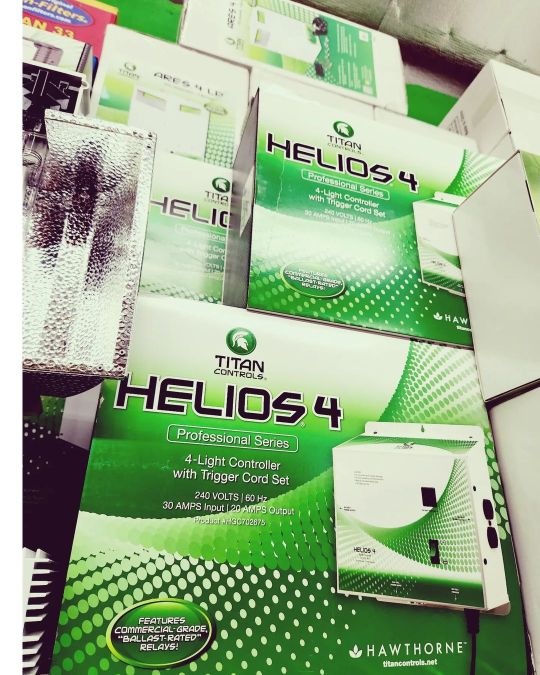
Titan Controls, is a manufacturer of environmental controls, precision timers, lighting controllers, and CO2 equipment based in the Pacific Northwest. We just bring you their products at the Cheapest Prices! #GrowRoomControls #GrowRooms #TitanControls #Helios4 #CheapestPrice #Hydroponics #IndoorGardening #Riverside #Followus (at Cheapest Hydro - Quality Products Cheaper Prices) https://www.instagram.com/p/CpWKGeEvalL/?igshid=NGJjMDIxMWI=
#growroomcontrols#growrooms#titancontrols#helios4#cheapestprice#hydroponics#indoorgardening#riverside#followus
0 notes
Photo
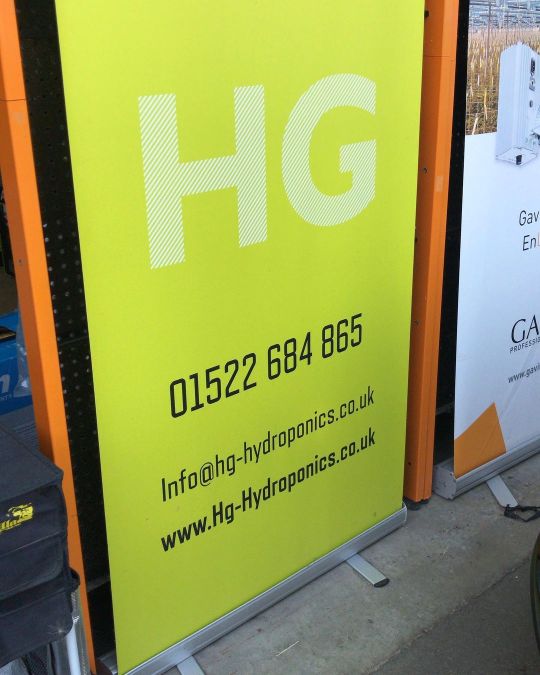
Open till 1.30pm today if it’s urgent otherwise we are back open at 9am tomorrow! @hghydroponics you can order online 24/7 for delivery or collect in store @hghydroponics #Hydroponics #growroom #hydro #growops #Growshop #garden #Gardening #gardener #gardenlife #love #plants #plant #flower #flowers #growing #lincolnshire #lincoln #naturelovers #Bud #love #allotment #vegtables #fruit #homegrown #lincoln #gardener (at Lincoln, Lincolnshire) https://www.instagram.com/p/CgMLLFAtOt8/?igshid=NGJjMDIxMWI=
#hydroponics#growroom#hydro#growops#growshop#garden#gardening#gardener#gardenlife#love#plants#plant#flower#flowers#growing#lincolnshire#lincoln#naturelovers#bud#allotment#vegtables#fruit#homegrown
1 note
·
View note